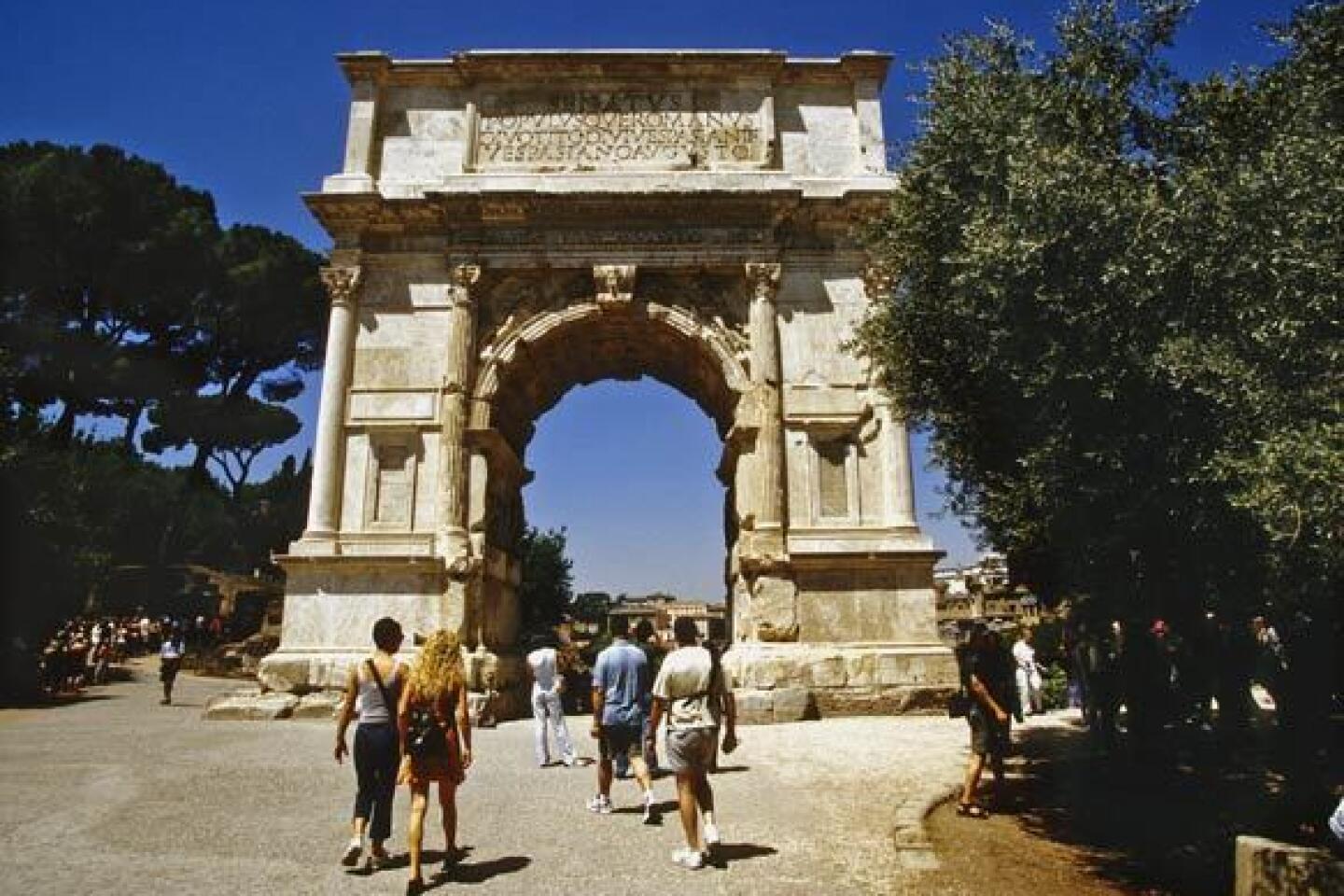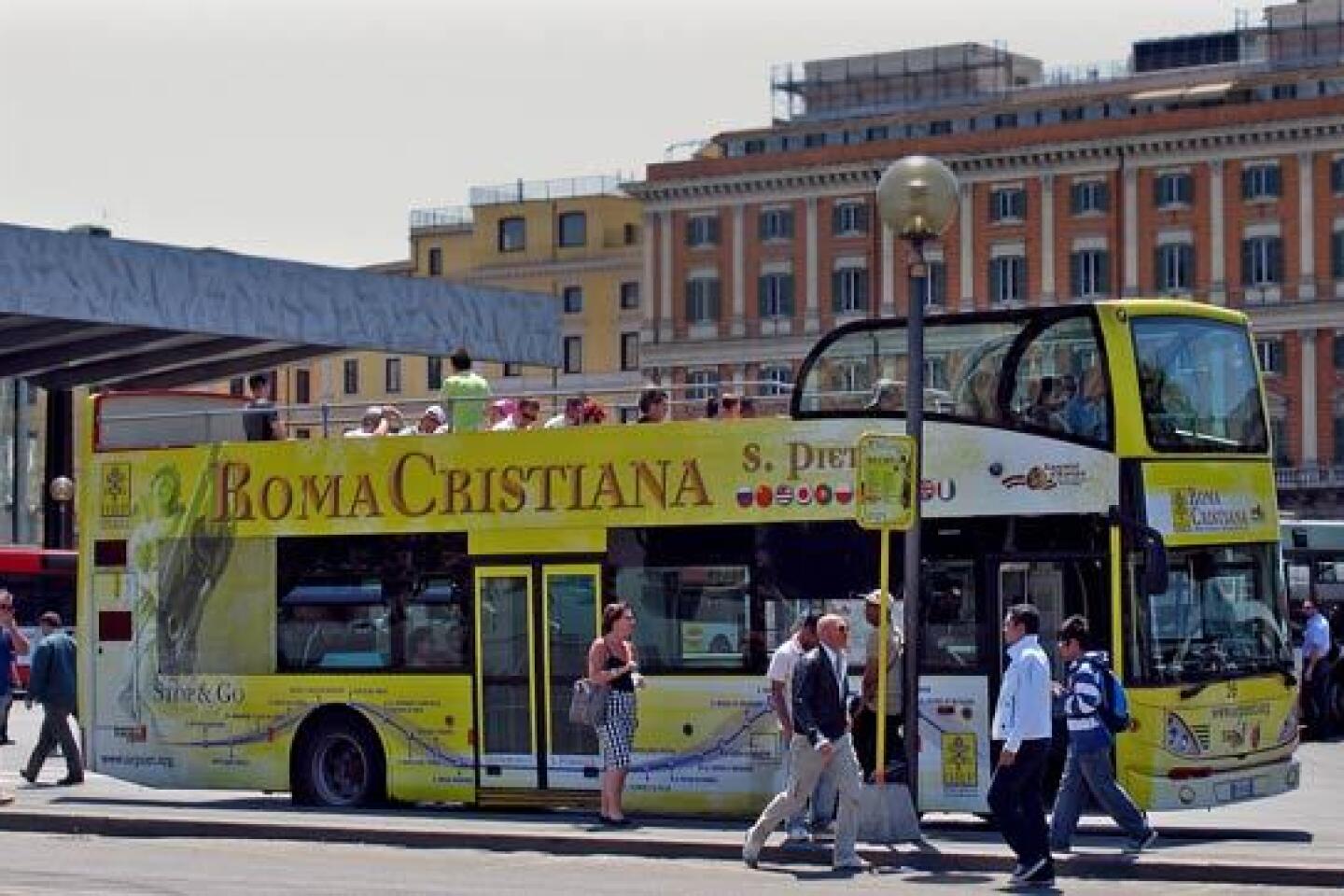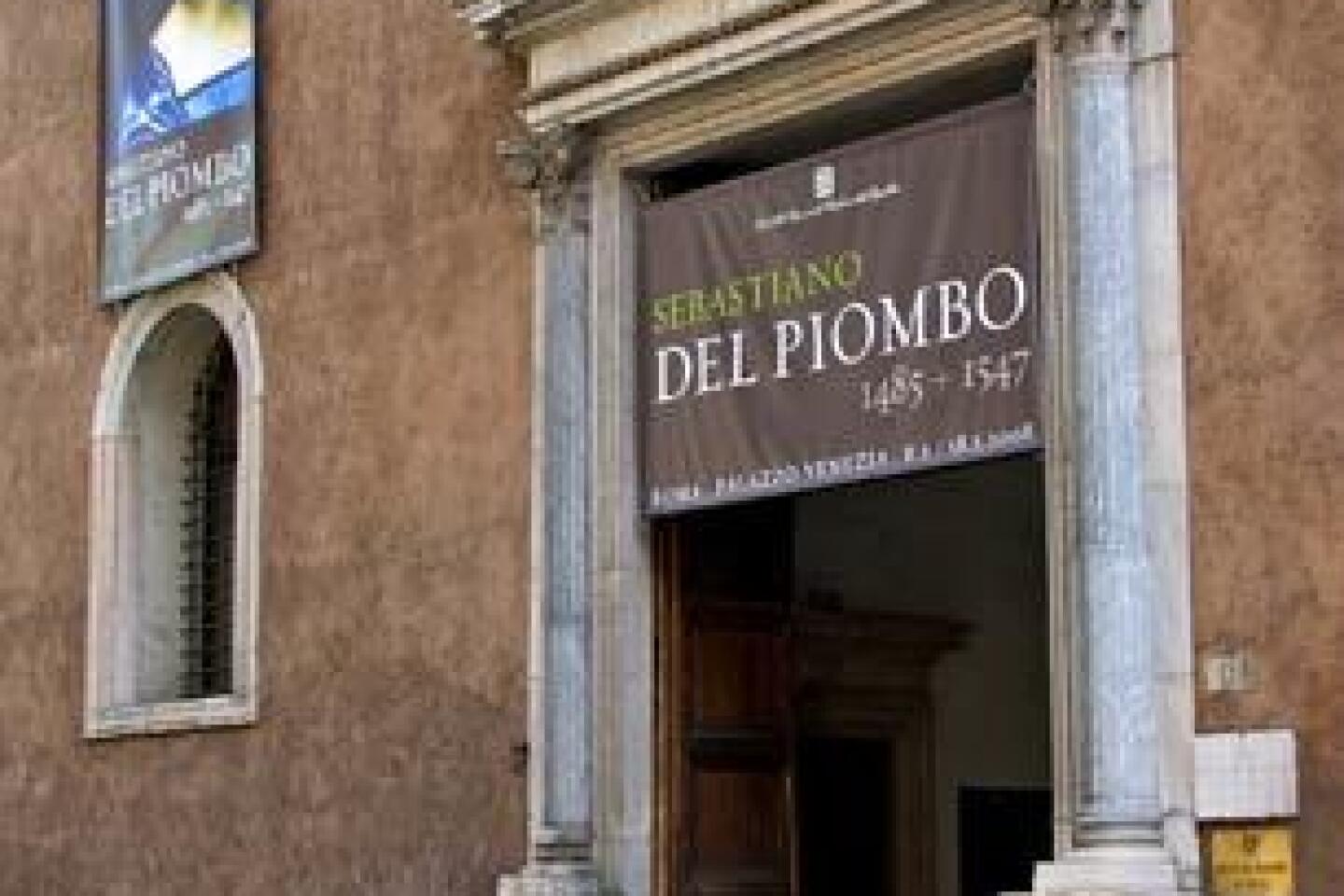Budget travel in Rome
- Share via
ROME — At a tourist information center near the Roman Forum, I asked an attendant whether anything was free in the Eternal City. He looked at me strangely, then came up with a response. “Si, signora,” he said, pointing to the brochures on the countertop, “all these are free.”
It’s like that in Rome, where prices for everything are high, even before you get sticker shock from exchanging dollars to euros. Here’s how a budget traveler can try to make do.
STANDING ROOM ONLY
At a bar, cafe or pasticceria, stand at the counter instead of sitting at a table. The prices are higher if you sit down and let a waiter or waitress serve you, plus you might be inclined to tip. Elbow to elbow with locals at the counter, you’ll find the food is just as good, and it’s easier to watch Romans do as they do.
BREAKFAST TREAT
It is becoming less and less common for breakfast to come with the price of a room at budget hotels and pensions in Rome. If it’s not included where you’re staying, go out to a cafe and have some marvelous caffeinated beverage -- macchiato, cappuccino, espresso -- with a cornetto, which is something like a croissant, best consumed standing at the counter (as above).
Budget lunches work the same way. Cafes usually display sandwiches and other quick eats. Make your choice, pay at the cash register, show your receipt to the man behind the counter and eat at the bar. Bakeries often have the best sandwiches and pizza by the slice. The difference between lunching this way and settling down at a table could be as much as $15.
MORE B&Bs
Aside from such well-known money-saving accommodations as budget hotels and religious houses, bed- and-breakfasts have finally arrived in Rome. There are hundreds of them in every district, priced from about $80 to $240, such as Il Covo, 011-39-06-4815871 (doubles $158), near Via Panisperna in the old Roman slum area, or Subura.
The proliferation of B&Bs started during the Catholic Church’s Jubilee in 2000, when there weren’t enough beds for the millions of pilgrims expected, and Romans were encouraged to open their homes to visitors. Now the tourism bureau in Rome keeps a long B&B list that can be viewed at www.romaturismo.com. Two bed-and-breakfast agencies worth checking out: Bed and Breakfast Italia, www.bbitalian.it, and Bed and Breakfast Assn. of Rome, www.b-b.rm.it.
FREE IN VATICAN CITY
Is anything free at St. Peter’s?
The great Bernini’s Colonnade and the Basilica, to begin with. Inside, the subterranean Papal Tombs are free, but there’s a charge to ascend to Michelangelo’s Dome (about $10 by elevator or $7.50 on foot). Admission to the Papal Treasury Museum costs about $9, and a visit to the fabled Vatican Museums (including the Sistine Chapel) costs a whopping $21, though it’s worth remembering that the Vatican Museums are free from 8:30 a.m. to 12:30 p.m. the last Sunday of every month. For general information: www.vatican.va.
My favorite good deal at St. Peter’s are basilica tours offered for free by various religious groups, meeting at the tourist information office just outside the church. These tours have a decidedly religious slant. Even though I’m not Roman Catholic, I took one a few years ago and count it as one of the best hours I’ve spent in my life.
At 9:45 a.m. Tuesdays and Thursdays, St. Peter’s Missionaries gives a free tour; at 2:15 p.m. Mondays through Fridays, a guide from the Pontifical North American College is on hand; and at 3 p.m. Thursdays, one of the Sisters of Mercy shows people around.
SEASONAL BARGAINS
Unlike many Northern European capitals, Rome has a sliding price scale for hotel rooms, depending on the season. Top rates are charged from April to October. But from November to March (not including the holidays), it’s low season, which means that you might be able to get a room in an upscale hotel for less than $200 a night.
Off-season, try the Hotel Villa San Pio, 18 Via San Melania, 011-39-06-570057, www.aventinohotels.com; the Hotel Scalinata di Spagna, 17 Piazza Trinita dei Monti, 011-39-06-6793006, www.hotelscalinata.com; or the Hotel Bramante, 24 Vicolo delle Bramante, 011-39-06-68806426, www.hotelbramante.com.
CHEAP SHOPS
Forgot your toothbrush? Need some flip-flops or an envelope? Look for a casalinghi shop in your neighborhood, selling a range of knick-knacks at rock-bottom prices. Most are operated by immigrants, like the one at the bottom of Via Urbana near the Cavour Metropolitana run by a nice young family from China.
Rome also has its own 99-cents-only stores. One is Euro City at 221 Via Cavour, where it’s more like everything for $1.50.
NEW FORUM FEES
The whole Forum area, from the Vittoriano to the Colosseum, used to be free, a place for wandering, like a public park. But in early March, a $16.50 entrance fee was instituted, partly to control pick-pocketing. The Ministry of Culture says the revenue also will help underwrite further excavation work in a place where you can’t dig a hole without unearthing archaeological treasures.
Admission includes one entrance over two days at the Forum, Palatine Hill and the Colosseum. A nifty new addition at the Colosseum is the Time Machine tours for about $8, showing visitors digital images of what the place looked like in ancient times. Old-fashioned audio guides cost about $7.
Of course, there are ruins all over Rome. One you can walk alongside without paying an entrance fee is the Emperor Trajan’s Forum, with its famous column. The same goes for Portico d’Ottavia, alongside the magnificent Teatro di Marcello, with entrances on the Via Teatro di Marcello and Via Portico d’Ottavia near the Jewish Ghetto.
FOLLOW THAT BUS
Like other European capitals, Rome has several fleets of hop-on, hop-off sightseeing buses, such as Trambus, www.trambusopen.com. It starts and ends at Termini Station, following a two-hour route that passes most major sights in the historical center. The buses run about every 10 minutes from 8 a.m. to 8 p.m. daily and cost about $24 a day, with audio in eight languages and discounts at many museums and tourist sights along the way.
The same company runs Archeobus hop-on, hop-off tours along a route that takes in the Appian Way, priced at about $18 a day.
The Opera Romana Pellegrinaggi, www.josp.com, part of the diocese of Rome, runs two main hop-on, hop-off bus lines that take in such far-flung sites of interest to religious pilgrims as San Giovanni in Laterano and Santa Maria del Popolo. The prices range from $28 to $38.
CITY AND TRANSIT PASS
And then there’s Rome Pass, www.romapass.it/english, a co-effort of the city of Rome, Ministry of Cultural Heritage and ATAC mass transit system, giving visitors access to about 40 sites and museums as well as unlimited use of buses, trams and subways in the historical center. The standard Rome Pass costs $30, is good for three days and allows entrance to two participating sites or museums for free; thereafter, discounts on admission to sites and some special events are available to cardholders.
PIAZZAS AND CHURCHES
All this sound too complicated? Skip it and spend your time walking from one amazing piazza to another or from one exquisite church to the next.
The church of Santa Maria del Popolo at the northern side of the Piazza del Popolo has two stunning Caravaggios, “The Crucifixion of St. Peter” and “Conversion on the Way to Damascus,” as well as a Bernini facade. On the other side of the historic center, there’s San Pietro in Vincoli, enshrining the tomb of Pope Julius II, highlighted by Michelangelo’s breathtaking Moses.
More to Read
Sign up for The Wild
We’ll help you find the best places to hike, bike and run, as well as the perfect silent spots for meditation and yoga.
You may occasionally receive promotional content from the Los Angeles Times.














